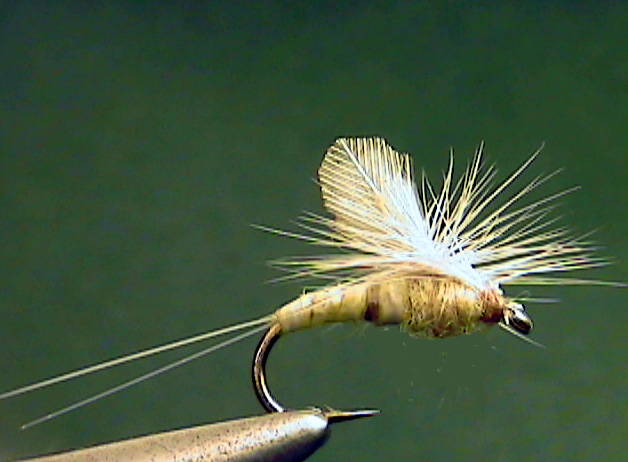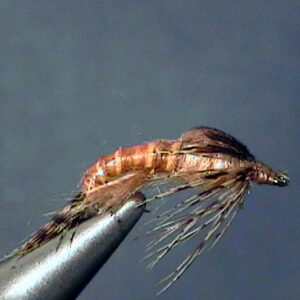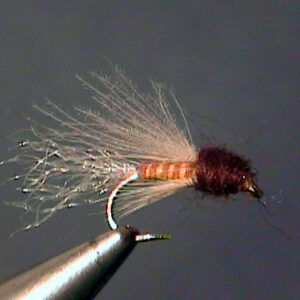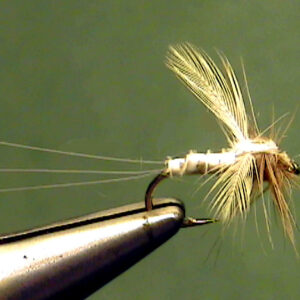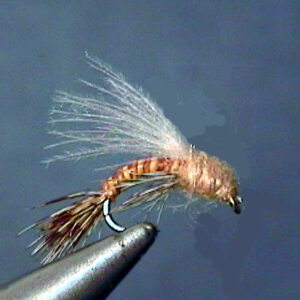Hook Size: 14
The Perfect Fly Eastern Pale Evening Dun is an excellent imitation of the adult stage of life of the mayfly. It imitates the mayfly as it drifts or floats on the surface, drying it wet wings enough to fly off the water onto the banks, bushes or trees where it will eventually change into the spinner stage of life. It even imitates the dun down to two or three tails and it two upright wings. It is fished on the surface as a dry fly. It should be treated with floatant.
the Eastern Pale Evening Dun, or Ephemerella invaria, is one of the mayflies that are commonly called “Sulphurs” as well as a “Eastern Pale Evening Duns”. This is another good reason for using the scientific
names rather than common names.
The dorothea (which is the true Sulphur) is quite similar to the invaria (Eastern
Pale Evening Dun) species but there are important differences in color, hatch
times, habitat and methods of imitating them. This mayfly is found in the Eastern
U. S. and in some Mid-western trout streams.
The body of the Sulphur is more of a true sulphur color than the Eastern Pale
Evening Dun. The Eastern Pale Evening Duns body is a tannish, yellow color.
The sulphur is also a hook size and sometimes two hook sizes smaller than the
Eastern Pale Evening Dun. These mayflies usually hatch late in the afternoon
from about 4:00 to 7:00 P. M. They hatch approximately two weeks earlier than
the Sulphur Duns.
These mayflies are found in freestone streams, spring creeks and many
tailwaters. Since they are crawler nymphs, they don’t frequent fast water but they
exist in the moderate flows in many pocket water streams. Generally, you will find
Eastern Pale Evening Duns in the slow to moderately flowing water, but again,
the type of stream varies their habit to some degree.
One big difference in the Eastern Pale Evening Duns and the Sulphurs is that
these mayflies like faster moving water than the Sulphurs. They are commonly
confused and in many areas of the East they are called Sulfurs.
Most of the time you will find them at the ends of long runs and riffles sections of
the stream in the slow to moderate flows. Large pockets located within fast water
areas may also hold Sulphurs.
In some tailwaters, the stream flow is moderate and constant with little variation. It
can be slow or fast depending on the discharges from the dam. This will vary the
location of the insects and often they will move short distances if the flows vary
over a long period of time. In tailwaters, the hatch times of the year and water
temperatures will often differ from those of the freestone streams because.
Copyright 2003 James Marsh
